Collective Molecular Activities of the Plant: Piper Divaricatum
Plant ID: NPO25797
Plant Latin Name: Piper Divaricatum
Taxonomy Genus: Piper
Taxonomy Family: Piperaceae
Plant External Links:
NCBI TaxonomyDB:
405324
Plant-of-the-World-Online:
n.a.
Overview of Ingredients
35 All known Ingredients in Total
Unique ingredients have been isolated from this plant.Plant-Ingredients Associations were manually curated from publications or collected from other databases.
16 Ingredients with Acceptable Bioavailablity
Unique ingredients exhibit acceptable human oral bioavailablity, according to the criteria of SwissADME [PMID: 28256516] and HobPre [PMID: 34991690]. The criteria details:SwissADME: six descriptors are used by SwissADME to evaluate the oral bioavailability of a natural product:
☑ LIPO(Lipophility): -0.7 < XLOGP3 < +5.0
☑ SIZE: 150g/mol < MW < 500g/mol
☑ POLAR(Polarity): 20Ų < TPSA < 130Ų
☑ INSOLU(Insolubility): -6 < Log S (ESOL) < 0
☑ INSATU(Insaturation): 0.25 < Fraction Csp3 < 1
☑ FLEX(Flexibility): 0 < Num. rotatable bonds < 9
If 6 descriptors of a natural plant satisfy the above rules, it will be labeled high HOB.
HobPre: A natural plant ingredient with HobPre score >0.5 is labeled high human oral availability (HOB)
11 Ingredients with experimental-derived Activity
Unique ingredients have activity data available.Ingredient Structrual Cards
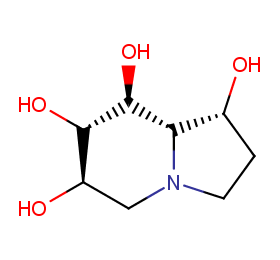
Ingredient ID: NPC95509
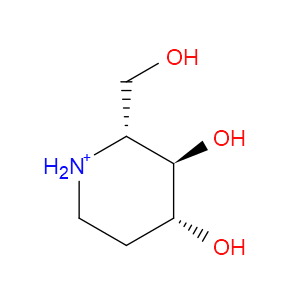
Ingredient ID: NPC76726
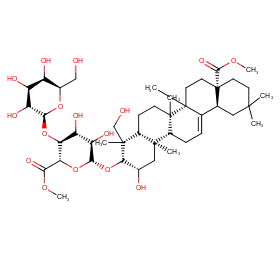
Ingredient ID: NPC7009
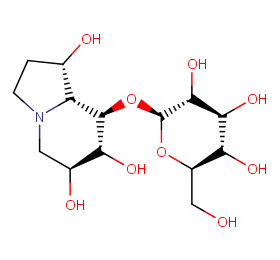
Ingredient ID: NPC52378
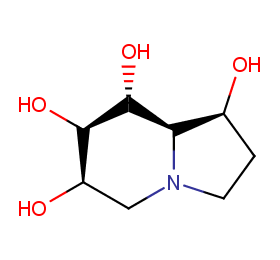
Ingredient ID: NPC34291
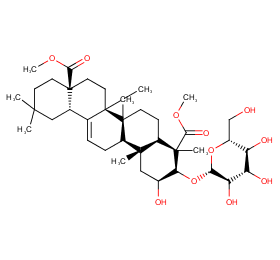
Ingredient ID: NPC310102
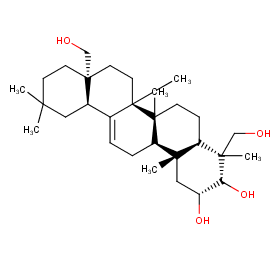
Ingredient ID: NPC297644
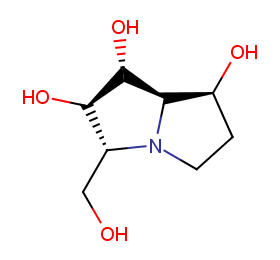
Ingredient ID: NPC294883
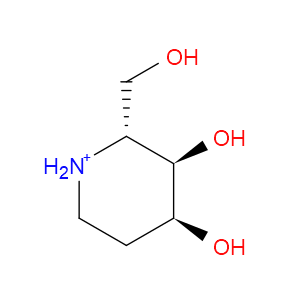
Ingredient ID: NPC290106
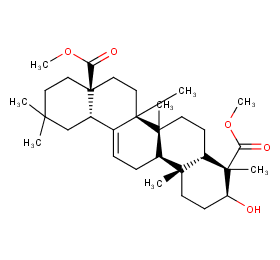
Ingredient ID: NPC289156
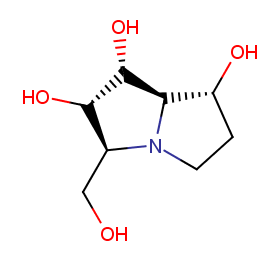
Ingredient ID: NPC288641
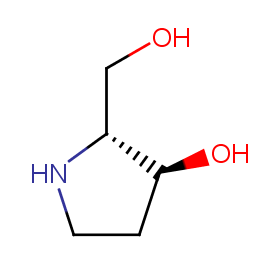
Ingredient ID: NPC272396
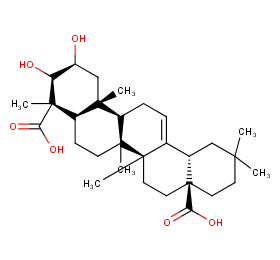
Ingredient ID: NPC261935
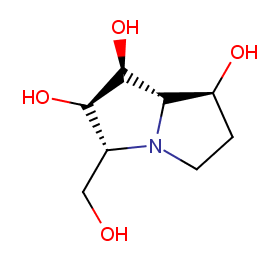
Ingredient ID: NPC252103
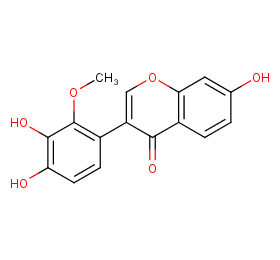
Ingredient ID: NPC250800
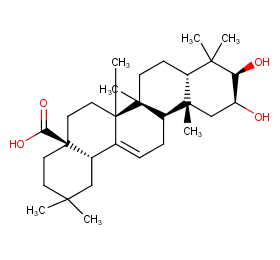
Ingredient ID: NPC246523
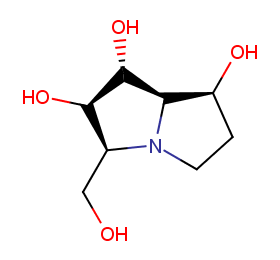
Ingredient ID: NPC245264
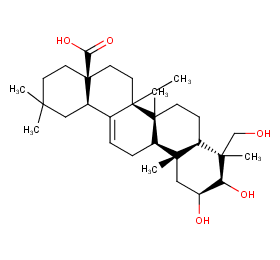
Ingredient ID: NPC243175
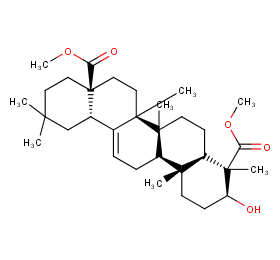
Ingredient ID: NPC241925
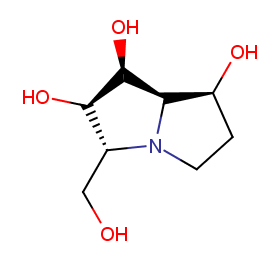
Ingredient ID: NPC208560
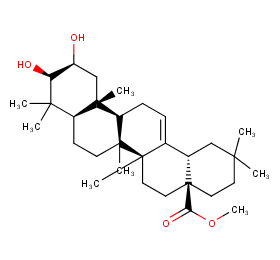
Ingredient ID: NPC207426
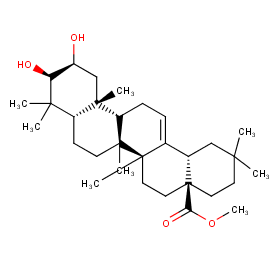
Ingredient ID: NPC195992
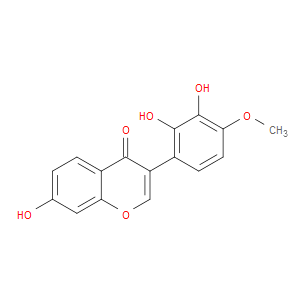
Ingredient ID: NPC195763
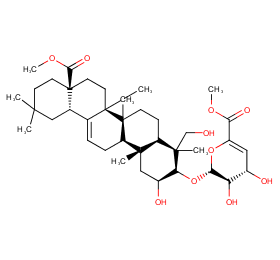
Ingredient ID: NPC185179
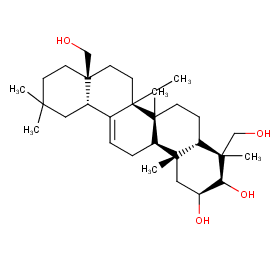
Ingredient ID: NPC16962
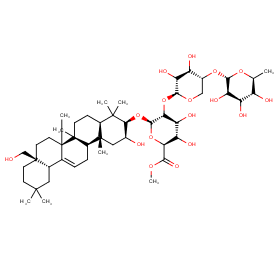
Ingredient ID: NPC167856
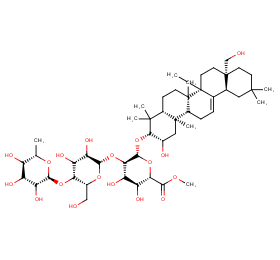
Ingredient ID: NPC146860
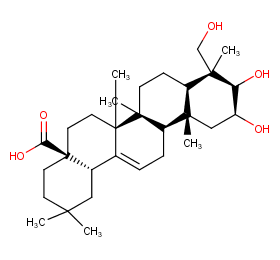
Ingredient ID: NPC145667
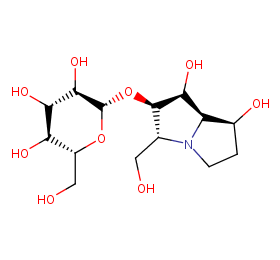
Ingredient ID: NPC133221
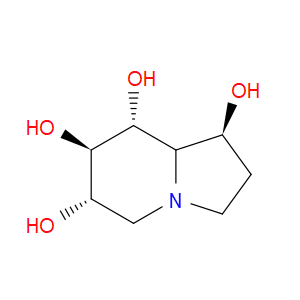
Ingredient ID: NPC126664

Ingredient ID: NPC12514
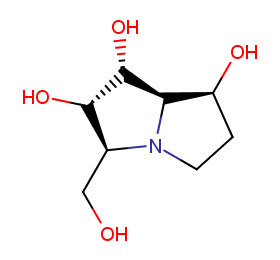
Ingredient ID: NPC124503
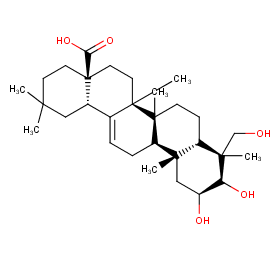
Ingredient ID: NPC119443
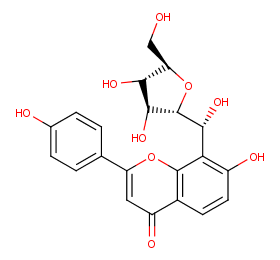
Ingredient ID: NPC117384
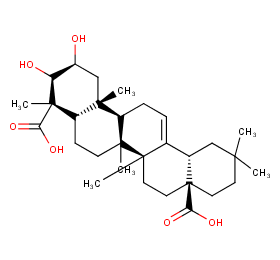
Ingredient ID: NPC106112
Classification of Human Proteins Collectively Targeted by the Plant
Detailed Information of Target Proteins
| Target Type | Protein Class | Gene ID | Protein Name | Uniprot ID | Target ChEMBL ID |
|---|---|---|---|---|---|
| Therapeutic Target | Nuclear hormone receptor subfamily 1 | THRB | Thyroid hormone receptor beta-1 | P10828 | CHEMBL1947 |
❱❱❱ Associated Human Diseases and Detailed Association Evidence
How do we define the Plant-Targeted Human Disease Association?
Associated human diseases of an individual plant are summurized based on FOUR types of association evidence, these include:
❶ Association by Therapeutic Target: Bioactive protein targets of the plant were defined in "Molecular Targets" section, target-disease associations collected from TTD database were subsequently used to build the associations between the plant and its targeted human diseases.
❷ Association by Disease Gene Reversion: Plant and a specific disease will be associated when >= 1 plant target gene overlaped with disease's DEGs.
❸ Association by Clinical Trials of Plant: Plant and a specific disease will be associated when >= 1 clinical trial (the plant is the intervetion) can be matched in ClinicalTrials.gov database.
❹ Association by Clinical Trials of Plant Ingredients: Plant and a specific disease will be associated when >= 1 clinical trial (the plant ingredient is the intervetion) can be matched in ClinicalTrials.gov database.
Associated Disease of the Plant | Association Type & Detailed Evidence |
|---|---|
Carcinosarcoma of uterusDisease Category: 02.NeoplasmsDisease ICD-11 Code: 2C76.43 |
TDP1
|
Cytomegaloviral diseaseDisease Category: 01.Certain infectious or parasitic diseasesDisease ICD-11 Code: 1D82 |
THRB
|
Diffuse large B-cell lymphomasDisease Category: 02.NeoplasmsDisease ICD-11 Code: 2A81 |
TDP1,THRB
|
Germ cell tumour of testisDisease Category: 02.NeoplasmsDisease ICD-11 Code: 2C80.2 |
THRB
|
Hyper-lipoproteinaemiaDisease Category: 05.Endocrine, nutritional or metabolic diseasesDisease ICD-11 Code: 5C80 |
THRB
|
Hypo-thyroidismDisease Category: 05.Endocrine, nutritional or metabolic diseasesDisease ICD-11 Code: 5A00 |
THRB
|
Inborn lipid metabolism errorDisease Category: 05.Endocrine, nutritional or metabolic diseasesDisease ICD-11 Code: 5C52 |
THRB
|
Mesothelioma of pleuraDisease Category: 02.NeoplasmsDisease ICD-11 Code: 2C26.0 |
TDP1
|
Serous cystadenoma,borderline malignancy of ovaryDisease Category: 02.NeoplasmsDisease ICD-11 Code: 2C73.4 |
TDP1,THRB
|

